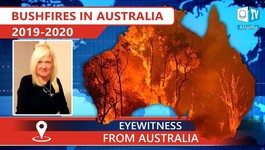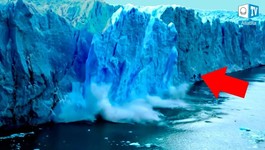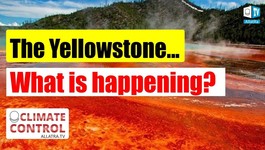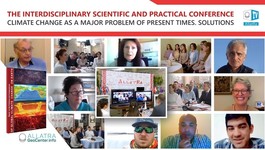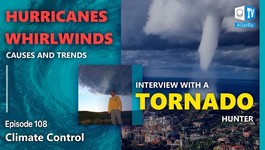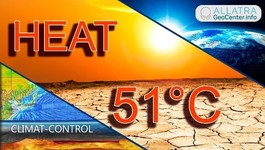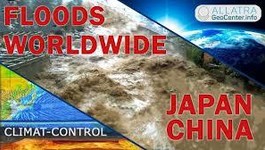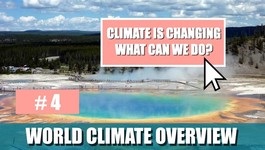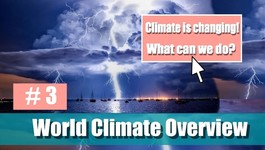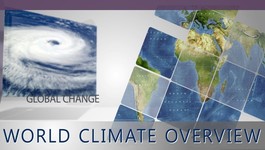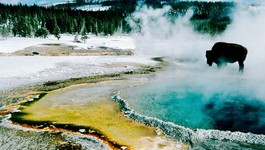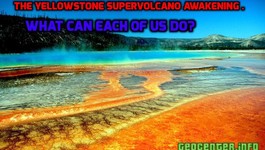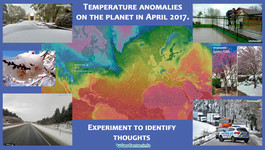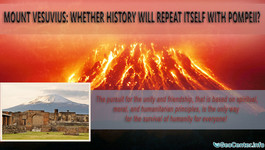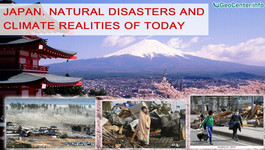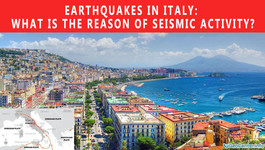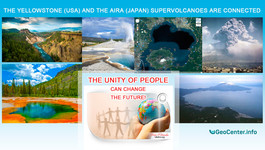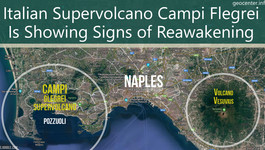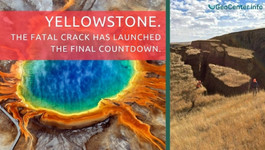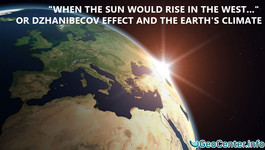Cracks in the Earth! What is happening to the planet? Climatic changes 104

In the current issue of the program "Climate control. Climatic changes" we will consider the causes of cracks in the ground and we will disclose the topic of tectonic activity of the East African rift.
Recent climatic events on Earth:
- The eruption of the volcano Mount Io on the island of Kyushu (Japan).
- The eruption of the volcano Kirishima (Japan)
- Weakening of the North Atlantic Current
- Cracks in the earth's crust appeared in Kenya and Peru Interview with the author of lectures on popular geology Spiridonov Alexander Victorovich (senior researcher, Geological Faculty, Moscow State University).
A unique program «It is coming»
About climate events in the world and solving climate problems you can read on the website https://geocenter.info/en
And also in the report of ALLATRA SCIENCE scientists "On the problems and consequences of global climate change on Earth. Effective ways to solve these problems."
_____________________________
Hello, this is Climate control and today we will talk about cracks in the ground, emerging all over the planet. A senior researcher at the Department of Dynamic Geology of Moscow State University will comment on the Ш reason why they occur. And we will also cover a topic of tectonic activity of the Great Rift Valley in Africa.
And now, to the latest climate events on Earth.
On 19th of April, on the island of Kyushu, a dormant volcano Mount Io erupted for the first time in 250 years. The greatest threat, in the experts' opinion, is not the eruption of the volcano itself, but the probability of a super volcano activation, located under the Kikai caldera. Indeed, in case of its eruption, the consequences would be disastrous for the whole planet.
In addition, Kirishima volcano eruption started. It was preceded by about 40 earthquakes. Both eruptions were assigned level 3 volcanic alert on Japan's 5-level scale.
Possible eruption of Kikai Caldera was discovered recently and is actively studied now. You can watch the report on the Kikai supervolcano in the 7th episode of the "Urgent News".
As a result of study of currents in the North Atlantic, scientists from Potsdam Institute for Climate Impact Research have determined that the North Atlantic Current has weakened by 15% since the mid-twentieth century. The water flow has decreased by 3 million cubic meters per second. Scientists believe that this is partly due to the accelerated melting of the glaciers of Greenland, but they do not undertake to establish all the reasons for such an intensive slowdown.
At the same time, a group of researchers from the University of Reading, Great Britain, came to somewhat different results. They believe that the flow has been slowing down over the past 150 years. Now it is the weakest in the last few thousand years and, according to forecasts, will only weaken further. The study notes that this is a natural process that has nothing to do with human activities.
The North Atlantic Current is the continuation of the Gulf Stream, which carries warm masses of water from the Caribbean Sea to the coast of Ireland and Europe. It is precisely its effect that leads to the fact that at the same latitudes the average temperature in Europe is 10-15 degrees higher than that in the United States and Canada.
March 19, 2018 in Kenya, not far from the capital of Nairobi, there appeared a crack in the earth's crust the length of several kilometers. It measures 15 meters deep and 20 meters wide in some spots.
A geological fault, or a fracture, is discontinuity in a volume of rock, in other words, the separation of a single massif into two blocks. If there was just a split in rocks without the blocks shifting relative to one another, then this formation is called a crack. If the blocks slip relative to one another, it is called a fault.
Large faults in the Earth's crust are formed at the junctions of tectonic plates during their movement, which leads to earthquakes. Often faults do not originate from a single plane, but form zones of explosive deformation. Faults can be ancient - "dead", leaving a trace in the geological history of some catastrophic event; or "alive", active, exhibiting mobility now and capable of showing it in the near future.
The most striking example is the San Andreas fault. Since the boundaries of the plates are not perfectly even, one can see protrusions and grooves on their surface, similar to teeth of a "gear". When moving, the Pacific and North American tectonic plates cling to each other's "teeth", thus, increasing the tension. When the voltage reaches a critical point, a "breakdown" occurs, which can be accompanied by strong earthquakes and a strong displacement of the earth's surface.
Alexander Viktorovich Spiridonov, Senior Scientist at the Department of Dynamic Geology of the Geological Faculty of Moscow State University, lecturer and author of lectures on popular geology, kindly agreed to share with us information about the causes of the occurrence of faults and earthquakes.
____
Aleksandr Viktorovich: The entire earth's crust is always in a tense condition. One cubic meter of any rock weighs about 2.5 tons. That is, if we simply dig out a cubic meter of any rock and put a sensor there, it will already be pressurized with 2.5 tons. And at 10 meters? What about at 100m or at several kilometers? If you would just go 20 kilometers deeper, without going beyond the limits of the Earth's crust, you probably realise what kind of pressure would already be there. That is without taking into consideration any other factors like: the forces of Earth's rotation, because nobody has canceled centrifugal and centripetal accelerations as we live on a rotating ball; the tectonic forces with which the plates interact with each other. What causes the deformation? It is caused by the tense condition, the above mentioned tense condition.
- In that case, another question arises: why does it crack in one spot and not in another, if the pressure is equally strong all over?
Aleksandr Viktorovich: And this is, perhaps, one of the main questions of techtonics: where, why and how will this deformation occur? It’s a very multifactorial system. We can not calculate the effect of each factor mathematically, anyway we average some data. Have a look at any granite, a facing tile for example. You can see the red grains of feldspar and the black grains of mica, and the gray grains of quartz next to it. You have got 1.5 million of these grains in one cubic meter. Each of them has its own strength limits, its own elasticity limits and each would deform in its own way. Try to calculate at least one cubic meter of it under load. I mean, one way or another we are somehow forced to average.
How does the earthquake itself occur? The earthquake itself occurs at the time of either the formation of a crack, or movements along the existing crack within the earth's crust. I mean, it is necessary to clearly distinguish that there are discontinuities with displacement, that we mentioned above as geological faults; and there are so-called discontinuities without displacement, the usual cracks. If you think about it, the cracks in the rocks are always there. They appear in the process of, for example, compacting the sediment from the sludge: the water is squeezed out, volume gets lost and a crack appears. So the magmatic melt is hot, even if it does not reach the surface of the earth, but will solidify somewhere in the bowels, at the time of cooling it will decrease in volume. And if some stress loads are applied later on to all of the above, then we are getting those very movements along these cracks. They then become exactly those geological faults that we were talking about. In general, if one would look at it that way, there will be many cracks even under our feet.
- In such a case, what amplitude would be enough to shift those blocks in order for the earthquake to start?
- Aleksandr Viktorovich: Evgeny Rogozhin, deputy director of the Institute of Earth Physics, once investigated the seismic focus of the Radchinsk earthquake of 1997 in Georgia. And it turned out that right at the time of the earthquake the displacement of blocks of the earth's crust was 1 meter. A year later, he arrived at exactly the same place and discovered that the amplitude of the displacement reached 3 meters. There wasn’t any seismic activity through all that period of time. It just came to an equilibrium state. That is, the displacement was very small directly at the very moment of the earthquake. Only a four-meter displacement of the bottom of the Indian Ocean in 2004 during the earthquake gave birth to a tsunami that washed away half of the coast of Indonesia. Similarly, the last known tsunami, which was in 2011, is Fukushima, an earthquake in Tohoku. The magnitude was significant - 8.6. The direct displacement in the rupture zone was also not more than 3 meters in the seismic focus itself.
Geological processes are practically independent of our attitude towards them. Basically there is no way for us to influence the geological processes, abyssal, tectonic processes. And the only thing that remains for us as a humanity is to minimize our losses from these processes. And that can be achieved only jointly, only all together. Regardless of what the government of different countries would try to do, that can’t be resolved at the level of one separate state. It should be a truly worldwide tendency.
____
Cracks in rocks can be of different sizes: from a few millimeters up to several kilometers. Cracks appear as a result of earthquakes, landslides, as well as in case of ground failures in the cavities of mine workings, clefts or karst cavities. Although the appearance of cracks on the surface of the earth is a quite common phenomenon, however, their consequences can be disastrous for people.
The scale of this natural phenomenon can be understood at an event that occurred in the city of Gramalote in northern Colombia, in the Norte de Santander Department.
The city was completely destroyed in a short time. People were notified and evacuated. In such extraordinary circumstances, willy-nilly you come to understand the importance of uniting in friendship and mutual assistance. It is important for us to be people!
Let's return to the topic of cracks in the earth's crust. A three-kilometer long and 100 meters wide crack appeared in 2011 south of Peru, in the Huacullani district of the Chucuito Province, near Lake Titicaca. The crack appeared suddenly. Ground as if split open.
In 2012, in the province of Chumbivilcas in the Peruvian region of Cuzco, locals took note of strange ground metamorphosis, in which multiple cracks began to appear. In the same region on the 2nd of March 2018 there was a strong landslide. After this, the cracks in the ground began to grow at a high rate. 53 large cracks had formed.
These are only some of the most large-scale cracks that were recorded by local residents. Events, not fixed with human eye, are much more. After all, statistics, such as for seismic events, is not maintained with respect to faults.
So what happened in Kenya? Scientists report that the crack was formed earlier, but it was filled with volcanic dust. And heavy rains washed away the dust and exposed fracture. This led to the collapse of the road and alarmed local residents living in close proximity to the fault. The appearance of a crack before downpours is associated with the movement of tectonic plates, which are moving away from each other by about three centimeters annually. However, other experts say that in this area there were no underground tremors, and the crack appeared immediately due to frequent showers.
The crack was formed on the territory of the Great Rift Valley, which divides the African plate into two parts - Nubian and Somalian. Even from space, a series of rift valleys are seen, separated by large faults.
A rift is a large cavity in the earth's crust, which is formed as a result of its stretching or longitudinal motion. This leads to thinning and faults in the Earth's crust.
On the surface of the continents, inactive or ceasing rifts mostly occur. The Great Rift Valley is an example of the now active continental rift, that is, the tectonic processes on its territory are continuing. But it should be understood that these processes are natural and last for millions of years.
Over the past 57 years, earthquake statistics with magnitude greater than 4.5 on the territory of the Great Rift Valley indicate that tectonic processes continue to occur in it and similar cracks will occur there in the future.
Kenya's leading expert geologist David Adede said:
"Although the rift has remained tectonically inactive for a long time, small movements can occur in the earth's crust, leading to the appearance of zones with a large number of cracks on the Earth's surface. In this case, heavy rains worsen the situation, contributing to the appearance of new cracks."
Learn more about the climatic situation in the world and ways of uniting people in such a difficult time, at geocenter.info web-site.
Volunteers of ALLATRA International Public Movement not only create the episodes of "Climate Control", but many other projects as well. A large-scale scientific research - the scientific and experimental project "PYRAMID" is being implemented now.
ALLATRA International Public Movement, volunteers of ALLATRA TV invite everyone to participate in the “PYRAMID" experiment, which will be carried out on September 29, 2018 at 17:00 GMT. The essence of the experiment is that all interested people from anywhere in the world, can receive information via telepathic contact, in this case a symbol that will be transmitted by the operator inside the PYRAMID apparatus. This will be 1 of 12 symbols sent to participants in advance. To participate in the project please fill in the form on allatra.tv site or send an email to [email protected]. Please indicate your surname, first name, patronymic, age and country in your letter. In response, we will send you a form with 12 symbols and provide detailed instructions. More details about this experiment will be described in the video. Follow the news and read on the page of the experiment on the ALLATRA TV website.

